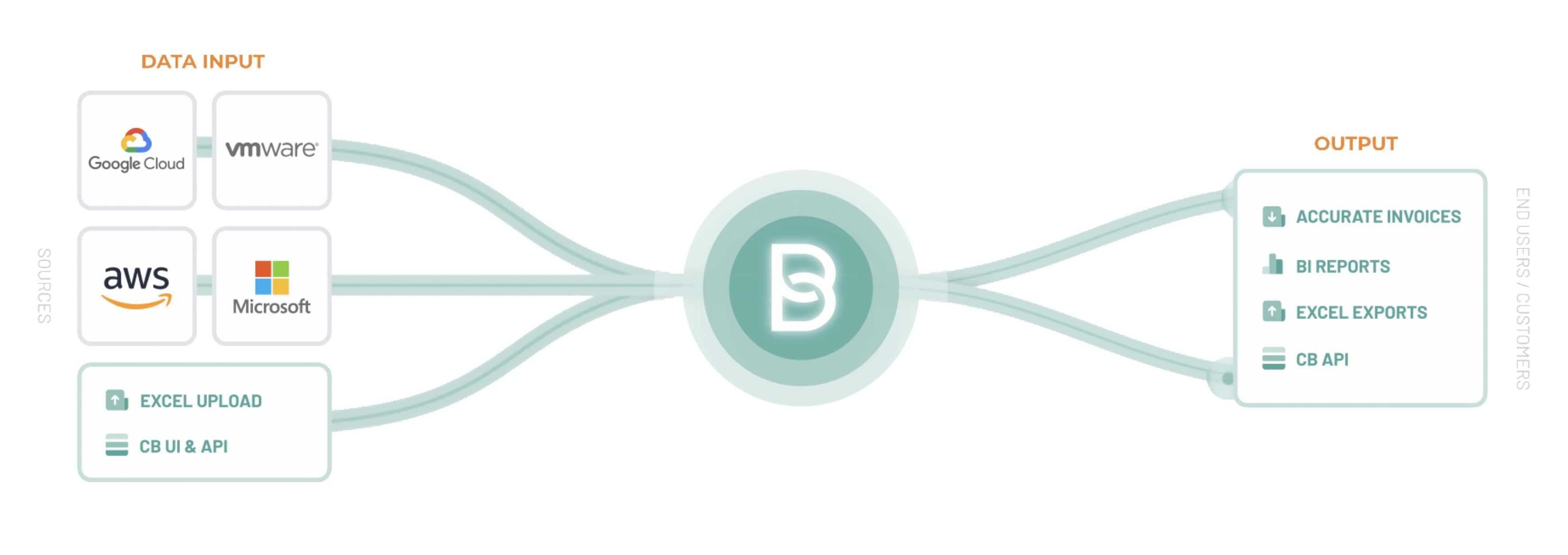Articles /

Table of contents
Get the week’s best CloudBilling content
Looking to improve your billing and kickstart a fresh approach in 2024? Look no further – you've come to the right place!
As a managed service provider (MSP), you know the difficulties that come with different pricing models, along with challenges such as project completion, software procurement and network monitoring. Managing these tasks manually is not only time-consuming, but also increases the risk of making mistakes.
Luckily for you, we will explain the importance of effective billing, key challenges in billing, present the best practices and how automation can help your business. Ready to kickstart the year? Let's dive in!
Why effective billing is important for an MSP business?
According to Kaseya Global MSP Benchmark Survey Report, nearly 70% of executives work over hours. Half of them routinely put in 50+ hour weeks and perform all-nighters to support their customers. These exhaustive schedules make it challenging for MSP owners to focus on business planning and other essential issues. In this context, the importance of effective billing for an MSP business becomes even more apparent.
Recognising the significance of the billing process is essential, as it holds as much weight as the product or service a company offers. If customers encounter dissatisfaction with payment terms or find the payment process complicated, they are likely to explore alternative options for their business needs.
Although billing may seem overwhelming, we are here to tell you that it doesn't have to be. MSPs can streamline their billing processes to get paid faster, but they can also concentrate on what truly matters – the growth and success of their business.
Before we jump into the billing best practices, let’s first have a look at some of the main challenges MSPs are likely to face.
The challenges MSPs face in 2024
Invoice management can be a real challenge. Even after carefully sending invoices, there is no guarantee that they will be paid on time. It's a hassle that takes up a substantial amount of your time. Let's take a closer look at the main challenges that MSPs often deal with:
Data Accuracy:
Data accuracy represents a significant challenge for MSPs. There is an imminent risk of incorrect data entry, where human error or system failure can lead to inaccuracies. This not only results in billing errors but also can damage client relationships and erode trust.
Payment Delays:
One of the permanent challenges that MSPs face is the issue of late payments. Despite providing first-rate services, clients can delay payments for various reasons, affecting the MSP's cash flow and overall financial health. This constant juggling of unpaid payments can be time-consuming and stressful.
Migration and Acquisitions:
Effective management of migration and acquisitions is essential for the financial well-being of MSPs. When poorly executed, these processes can lead to significant financial complications, disrupt operations and pose significant challenges. Careful management is therefore essential to mitigate risks and ensure a smooth transition that safeguards both operational continuity and financial stability.
Complex billing models:
With the evolving landscape of IT services, MSPs often adopt complex billing models to accommodate the diverse needs of clients. These complex structures can lead to confusion, both for the MSPs themselves and for their clients, making it difficult to monitor and manage billing effectively.
Integration challenges:
In an era where technology is constantly evolving, MSPs often face integration challenges. Ensuring seamless integration between various tools and platforms, such as ticketing systems and accounting software, is crucial for efficient billing processes. If these systems are not seamlessly integrated, operational inefficiencies and billing errors may occur.
Regulatory compliance:
Keeping up with the ever-changing regulatory landscape is a constant struggle for MSPs. Compliance requirements related to billing practices can be complex and demanding. Failure to comply not only exposes you to legal risks but can also result in financial penalties, further complicating the billing process.
In addition, governments around the world are implementing stricter cybersecurity regulations, underlining the importance for MSPs to ensure that their clients comply with these regulations. This is crucial not only to avoid fines but also to protect reputations against potential cyber risks.
Overcoming these challenges requires a strategic approach and innovative solutions. So, get ready as we're about to share some top-notch billing practices with you!
8 Billing best practices for MSPs
By implementing the following billing best practices, MSPs can improve transparency, enhance customer satisfaction, and position themselves for sustained success in a competitive industry.
Now, let's explore the key best practices that can redefine the billing landscape for MSPs in 2024.
1. Establishing clear payment guidelines
When it comes to managing payments, clarity is key. Establishing straightforward payment policies is crucial, covering essential details such as billing cycles, late fees, preferred payment methods, and reliable contact information.
By integrating these practices, you create a comprehensive framework that fosters transparency, reduces friction, and ensures timely payments.
2. Ensure accurate invoicing
By seamlessly integrating information from your helpdesk operations and detailed reports from your technicians, you do more than simply generate invoices - you create a transparent description of the value your services deliver. Each invoice becomes a clear breakdown, reflecting the tangible impact your solutions have on your customer's business.
3. Real-time monitoring
Implement real-time monitoring of billing activities to quickly identify and resolve any discrepancies. This proactive approach ensures accuracy and enables billing issues to be resolved on time.
4. Recurring customer reviews
Conduct regular reviews with customers to assess their changing needs and ensure that your billing model meets their evolving requirements. This ongoing communication minimises surprises and improves customer satisfaction.
5. Utilise due date alerts and payment incentives
With clients receiving numerous invoices monthly, it's easy for them to overlook payments. Send a friendly reminder as the due date approaches. Get creative in your billing by offering rewards or discounts for prompt payments.
6. Comply with regulations
Stay informed about the latest regulatory changes and compliance requirements in the MSP sector. Complying with regulations not only avoids legal complications, but also builds customer confidence.
7. Regular staff training
Invest in continuous training for staff involved in invoicing processes. This ensures that they are up to date with the latest tools and methodologies, reduces the likelihood of errors and improves overall efficiency.
8. Automate your billing
Implementing the above billing best practices can undeniably improve efficiency and accuracy in managing your billing processes. However, for an even more streamlined solution, you may want to consider adopting automation.
By implementing an automated solution, you will be able to streamline and improve the efficiency of your billing and significantly reduce the risk of errors inherent in traditional manual billing methods.
Let's dive deeper into what it means to automate your billing procedures next!
How automated billing software can help MSPs
Automated billing software is a transformative asset for MSPs, addressing critical challenges in manual invoicing and elevating operational efficiency.
Unlike conventional approaches, automation introduces efficiency, accuracy and a streamlined workflow, providing several benefits.
Here’s the main advantages of implementing automated billing software for MSPs:
Error reduction: By consistently adhering to predefined rules, automated tools minimise the risk of human errors in data entry and calculations, instilling precision and trust into billing processes.
Reduction of the workload: This software significantly reduces the daily workload for finance teams, allowing them to redirect their efforts towards strategic business aspects, thereby enhancing overall efficiency.
Accelerated processes: Critical procedures, including month-end closing, are expedited through automation, freeing up time for teams to focus on high-value tasks and strategic initiatives.
Enhanced operational efficiency: Offering seamless scalability, automated billing software ensures accurate handling of growing invoice volumes. It facilitates quick analysis of accounts payable processes, contributing to overall operational efficiency.
Choosing the best MSP billing software for you
Throughout this blog, it has become clear that automating your invoicing process in 2024 is the way forward. If you're wondering where to find a solution that combines all the advantages listed above, look no further!
CloudBilling emerges as a top-tier solution, offering a comprehensive set of features tailored to meet the unique needs of MSPs.
Here is an overview of CloudBilling and the unique benefits it brings:
Less invoicing effort, maximum efficiency: Achieve up to a 90% reduction in monthly billing efforts. Our platform simplifies and automates the billing process, reducing the time and effort required to generate accurate invoices. With templates and auto-complete fields, CloudBilling speeds up billing cycles, enabling MSPs to send invoices fast, accurate and complete.
All-in-One invoice solution: CloudBilling takes the hassle out of multi-cloud invoicing by providing your customers with a single, all-in-one invoice. No more juggling multiple invoices from different cloud providers. Simplify your customers' experience and increase transparency with one consolidated invoice for all your cloud usage.
Configure discounts for specific customers: Our platform introduces a game-changing feature - the ability to configure discounts for specific customers or products. Billing operators can apply these discounts after the end customer has made an advance payment on the previous invoice.
Smooth integration experience: CloudBilling seamlessly integrates with your current software and applications, ensuring a smooth and trouble-free transition to automated invoicing and cost management.

Customisable solutions: CloudBilling offers customisable features, allowing MSPs to tailor their billing and cost management approach to align perfectly with their business needs and preferences. This flexibility ensures a personalised and efficient billing experience.
We hope this blog has provided you with valuable information on billing best practices and inspired you to optimise your billing processes. If you're curious to learn more on how CloudBilling can transform your billing process, book a free demo with us today.







